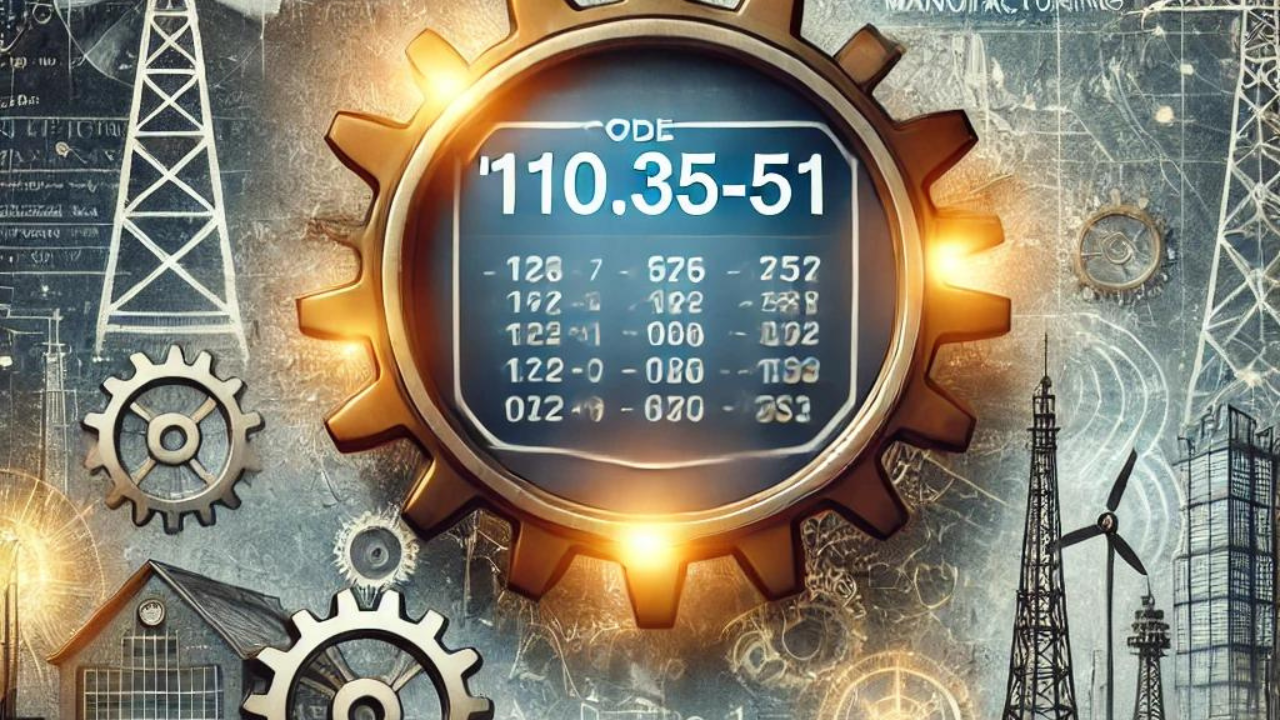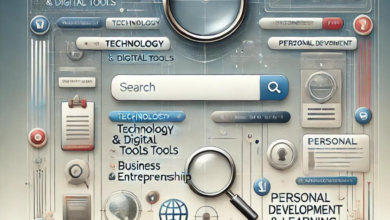Introduction
In today’s fast-evolving world of technology and standardization, specific codes and designations become essential in ensuring uniformity, safety, and efficiency across multiple sectors. One such code is “110.35-51.” While it may seem obscure to those outside specific industries, its significance spans several fields, including engineering, telecommunications, energy, and manufacturing. This article delves into the importance of “110.35-51,” exploring its definition, applications, and impact across various domains. We will also discuss how adhering to this code improves efficiency, safety, and compliance with regulatory standards.
What is “110.35-51”?
The code “110.35-51” refers to a standard designation or classification used in specific technical fields, depending on the industry it applies to. Like many codes or standards (e.g., ISO standards or IEC classifications), it creates uniformity in practices, processes, or safety regulations. Typically, such codes are generated by governing bodies like national or international regulatory organizations and are used to ensure compliance and safety across industries.
While the exact definition of “110.35-51” can differ depending on the context in which it is employed, its existence serves a common purpose: to ensure a regulated and standardized approach. Let’s explore how this specific code impacts various industries.
The Role of “110.35-51” in Engineering
Engineering is one of the core fields where technical codes and standards play a vital role. “110.35-51” might be associated with material designations, machinery maintenance, or safety protocols, depending on the context within the engineering domain.
In structural engineering, for instance, codes like “110.35-51” may help define the specifications for certain construction materials, such as metals, composites, or plastics. This ensures that all structures adhere to a specific set of safety guidelines. Engineers can rely on these codes to select materials that meet both local and international standards, reducing risks of material failure or structural inefficiencies. As a result, projects utilizing “110.35-51” standards experience fewer complications and offer longer durability.
Similarly, in mechanical engineering, this code can guide the maintenance and operation of machinery, guaranteeing that all processes align with standardized safety measures. “110.35-51” could, for example, be related to the operational temperature limits of specific equipment. By adhering to such codes, engineers can ensure that machinery operates efficiently without risking breakdowns or hazardous failures.
Impact in Telecommunications
Telecommunications is another field where standardization is critical. Codes like “110.35-51” might be integral to defining signal frequencies, communication protocols, or hardware specifications. In a highly interconnected world, adhering to these codes ensures smooth communication between devices and networks, regardless of geographical location.
For example, a code such as “110.35-51” may represent a specific frequency range that telecommunications companies must follow. By regulating these frequencies, telecommunications providers avoid interference and ensure high-quality communication channels. Furthermore, standard codes prevent incompatible systems from disrupting global communications, making the infrastructure more reliable and scalable.
This standardization also assists manufacturers of communication devices such as smartphones, routers, or satellites, ensuring that their products comply with global regulations. Codes like “110.35-51” facilitate smoother global communications and technological advancement, driving innovation and efficiency.
Energy Sector Compliance
Safety and efficiency are paramount in the energy sector. A code like “110.35-51” could dictate safety standards for energy storage systems, electrical installations, or hazardous area classifications. Adhering to such codes helps ensure that energy systems are safe and compliant with international regulations.
For example, codes such as “110.35-51” may define the maximum allowable temperatures for energy storage batteries or the insulation requirements for electrical wiring in power plants. Ensuring compliance with such standards is critical in preventing accidents such as electrical fires, explosions, or energy leaks.
Moreover, these standards support the growth of renewable energy sources like solar and wind power. By following standardized codes, industries can integrate new technologies more quickly, making energy production more efficient and environmentally friendly.
Influence in Manufacturing
In the manufacturing industry, standard codes like “110.35-51” are indispensable for maintaining consistency in production processes and ensuring product quality. These codes can relate to anything from material specifications to safety protocols in the production line. By adhering to them, manufacturers guarantee that their products meet stringent safety and performance requirements.
In some cases, “110.35-51” could be a material classification used for quality control in producing consumer goods, electronics, or medical devices. Following these standards helps companies avoid manufacturing defects, ensure product safety, and reduce the risk of product recalls. As a result, businesses that follow standardized codes often experience fewer legal challenges and a more substantial reputation in the market.
Furthermore, standardized processes facilitated by codes like “110.35-51” can increase supply chain efficiency. With uniform guidelines, suppliers, manufacturers, and distributors can work together seamlessly, ensuring that products move through the supply chain more effectively and reach consumers faster.
Compliance with Regulatory Bodies
An essential aspect of codes like “110.35-51” is their role in regulatory compliance. Governments and international regulatory bodies often mandate these codes to ensure safety and sustainability across various industries. Failure to comply can result in penalties, project delays, or legal challenges.
Companies and professionals can avoid costly litigation or fines by adopting these standards. For instance, “110.35-51” may be required by international organizations like the International Organization for Standardization (ISO) or industry-specific groups such as the American Society of Mechanical Engineers (ASME). Companies that conform to these standards demonstrate their commitment to safety, quality, and ethical practices.
The Future of “110.35-51” and Standardization
Codes like “110.35-51” will only increase significantly as industries evolve. Emerging technologies such as artificial intelligence (AI), the Internet of Things (IoT), and blockchain will likely soon be regulated by codes and standards. These evolving fields require uniformity to ensure compatibility, safety, and global collaboration.
In this context, “110.35-51” might take on new meanings or applications, becoming integral in developing cutting-edge technologies. Standardization will continue to be the backbone of innovation, ensuring that industries can scale while remaining safe, ethical, and sustainable.
Conclusion
The importance of “110.35-51” stretches across numerous fields, from engineering to telecommunications, energy, and manufacturing. This seemingly simple code ensures that processes are standardized, safety is prioritized, and efficiency is maximized. Whether regulating materials in construction, defining communication frequencies, or providing the safe operation of energy systems, codes like “110.35-51” are essential for maintaining order in a complex, interconnected world. As industries continue to grow and innovate, standard codes will remain crucial in ensuring that progress happens safely and sustainably.
FAQs
1. What is the purpose of “110.35-51”?
The purpose of “110.35-51” is to act as a standardized code used in various industries to ensure safety, efficiency, and practice uniformity. It helps regulate materials, processes, or technologies depending on the field in which it is applied.
2. How does “110.35-51” impact the engineering sector?
In engineering, “110.35-51” ensures the safe and efficient selection of materials and the proper functioning of machinery. It helps engineers adhere to global safety and operational standards, reducing the risk of structural or mechanical failures.
3. Why is “110.35-51” important in telecommunications?
“110.35-51” may define specific communication frequencies or hardware standards in telecommunications, ensuring reliable global communications and preventing network interference. Adherence to such codes allows for seamless connectivity and device compatibility.
4. How does “110.35-51” affect energy sector safety?
In the energy sector, “110.35-51” might regulate aspects like electrical installation safety, hazardous area classifications, or energy storage parameters, helping to prevent accidents and ensure compliance with safety regulations.
5. What role does “110.35-51” play in manufacturing?
In manufacturing, “110.35-51” helps maintain quality control, standardizes production processes, and ensures products meet industry safety and performance standards. It also supports more efficient supply chain management through uniform guidelines.
You May Also Read: https://usadigitaltime.com/prince-narula-digital-paypal/




